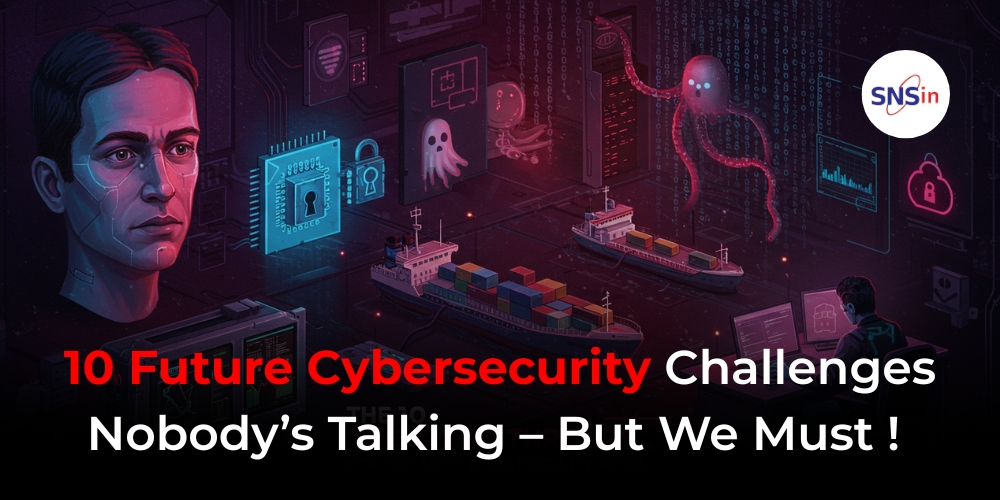Let’s play out a scene.
You’re the CFO of a fast-growing B2B company. You receive a video call from your CEO. It’s urgent. They’re stuck in an overseas negotiation, and the vendor needs an immediate wire transfer of ₹85 lakhs. The voice, the mannerisms, the background — all seems real.
So, you act fast. You approve the transfer. Because that’s what trust looks like in business.
Until two hours later — when the real CEO walks in, sipping coffee.
You’ve just been deepfaked.
And it cost your company dearly.
What Are Deepfakes, Really?
Deepfakes use AI-powered tools (especially deep learning and GANs — Generative Adversarial Networks) to mimic someone’s voice, face, tone, and even gestures. They’ve evolved far beyond meme-level fun.
In 2023, cybercriminals used deepfake audio of a finance head to steal $25 million from a multinational firm – and the incident happened during a real-time video conference.
This is not science fiction anymore. This is enterprise-level threat.
The Rise of Deepfake Scams in the B2B World:
Deepfakes aren’t just targeting elections or celebrities. They’re infiltrating boardrooms, vendor chains, and financial departments.
- In a Gartner report, it’s predicted that 20% of successful account takeover attacks in 2025 will involve deepfake technology.
- 65% of B2B leaders in an IBM-sponsored study admitted they wouldn’t be able to detect a well-executed deepfake video or voice message.
- In India, a leading manufacturing company in Pune reported a fraudulent order confirmation forged using a deepfake of their procurement head. They narrowly escaped transferring ₹3.2 crore.
In short, deepfakes are fast becoming the new phishing, but more convincing and harder to trace.
Why Are B2B Firms Vulnerable?
Because B2B relies heavily on:
- Email threads
- Video conferencing
- Cross-border transactions
- High-value approvals over digital platforms
- This makes them ripe for impersonation attacks.
Also, C-suite names, voices, and visual appearances are widely available online — from LinkedIn interviews to investor calls. Hackers don’t need to break in anymore. They can “reconstruct” your boss from a YouTube clip.
Real Scenarios to Watch Out For:
- “CEO Urgency” Fraud:
- Deepfake video or voice instructs a junior finance team member to make an emergency fund transfer.
- Deepfake video or voice instructs a junior finance team member to make an emergency fund transfer.
- Fake Vendor Calls:
- An impersonated client or vendor requests change in payment details or shares a corrupted invoice.
- An impersonated client or vendor requests change in payment details or shares a corrupted invoice.
- Investor Manipulation:
- Deepfakes used to forge earnings calls, mislead analysts, or simulate founder conversations to leak fake company strategy.
- Deepfakes used to forge earnings calls, mislead analysts, or simulate founder conversations to leak fake company strategy.
- Internal Sabotage:
- A fake HR head conducting interviews. Or a deepfaked CTO sending a rogue access code to a developer.
It sounds like Mission Impossible. But in 2025, your firewall won’t stop what sounds exactly like your CEO.
How to Defend Against Deepfake Scams:
1. Know the Signals: Train Your Teams:
If your employees expect deepfakes, they’re less likely to fall for them.
Red flags include:
- Slight lip-sync mismatch in videos
- Overly compressed or glitchy audio
- Unusual requests out of business hours
- Sudden urgency for money or credentials
Security awareness training should include deepfake modules, just like phishing simulations.
“Security is everyone’s job — especially in the age of AI.”
— Theresa Payton, Former White House CIO
2. Don’t Trust. Verify. Always:
Establish strict verification protocols for sensitive communications:
- A two-step verbal confirmation before fund transfers
- Internal code words for financial approvals
- Email + call backup before acting on high-risk requests
Use “out-of-band” verification — e.g., call their personal number if a business one seems off.
3. AI vs AI: Use Deepfake Detection Tools:
Yes, AI is the problem. But also the solution.
Tools like:
- Microsoft Video Authenticator
- Intel’s FakeCatcher
- Hive AI for deepfake detection
These analyze skin tone inconsistencies, blink rates, facial micro-expressions, and background noise to spot fakes.
SNS India partners with industry-standard detection providers to offer plug-and-play monitoring for C-suite impersonation threats.
4. Lock Your Digital Footprint:
Reduce the material hackers can work with:
- Limit executive video/audio content online
- Remove outdated interviews from public platforms
- Use watermarks in internal video calls
- Disable recording on internal Zoom/Meet sessions
In simple terms: if they can’t scrape, they can’t fake.
5. Legal & Incident Response Planning:
- Update your cybersecurity policies to include AI impersonation attacks.
- Prepare a deepfake-specific incident response plan — including what to tell clients, regulators, and partners.
- In India, the DPDP Act (2023) and IT Rules already require reporting of digital identity breaches within 72 hours.
Proactive > Reactive: Your Deepfake Prevention Toolkit:
| Defense Layer | Action Item |
| Employee Training | Monthly simulations, AI-impersonation red flag awareness |
| Verification Protocols | Dual-approval for financial requests |
| Detection Tech | Integrate deepfake scanning APIs into video tools |
| Vendor Vetting | Ensure your partners also follow anti-deepfake SOPs |
| Legal Response | Define liability and damage control policies in contracts |
How SNS India Can Help:
At SNS India, we’re at the cutting edge of AI-powered threat detection and deepfake defense for B2B.
We offer:
- C-suite impersonation monitoring
- Deepfake detection AI integrations
- Training modules for enterprises
- Zero Trust communication frameworks
Because your brand, your credibility, and your client relationships deserve more than guesswork.
Final Take:
Deepfakes aren’t a tech gimmick anymore. They’re sophisticated, scalable, and silent — everything a hacker could dream of. And in B2B, where trust drives deals, one fake voice can shake an empire.
Trust less. Verify more. Invest in resilience.
Because in 2025, reality isn’t what it looks — or sounds — like.
Talk to SNS India today to safeguard your business against AI-powered impersonation threats. Let’s make sure what’s fake never feels real again. Email us now to [email protected] and get your company audited right away.
Author
NK Mehta
![]()




